
Koillection is a self-hosted collection manager created to keep track of physical (mostly) collections of any kind like books, DVDs, stamps, games etc. As Koillection is meant to be used for any kind of collections, it doesn’t support automatic download of metadata but, it offers the option to add your own metadata freely. In this step by step guide I will show you how to install Koillection on your Synology NAS using Docker & Portainer.
This guide works perfectly with the latest Koillection 1.7.1 release.
STEP 1
Please Support My work by Making a Donation.
STEP 2
Install Portainer using my step by step guide. If you already have Portainer installed on your Synology NAS, skip this STEP. Attention: Make sure you have installed the latest Portainer version.
STEP 3
Go to File Station and open the docker folder. Inside the docker folder, create one new folder and name it koillection. Follow the instructions in the image below.
Note: Be careful to enter only lowercase, not uppercase letters.
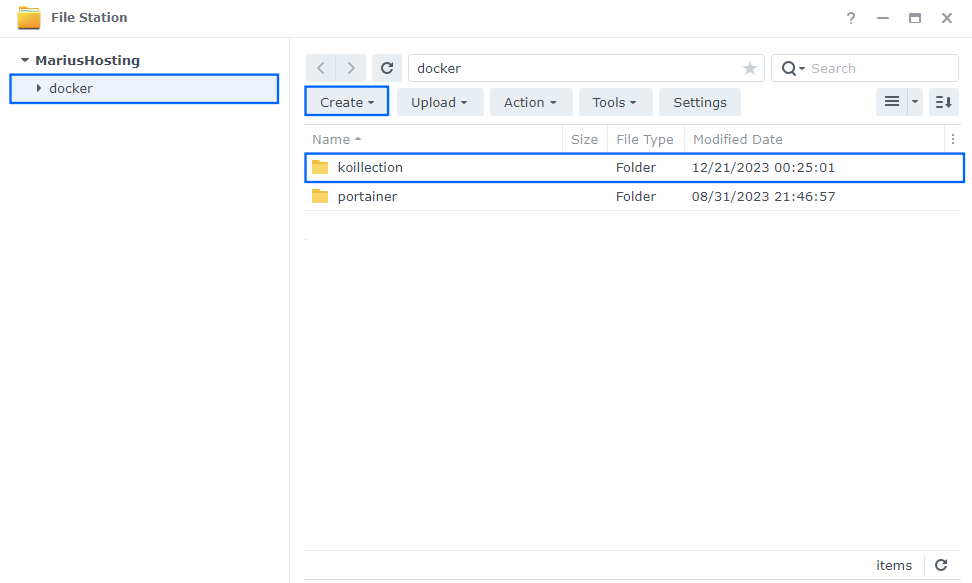
STEP 4
Now create three new folders inside the koillection folder that you created at STEP 3 name them conf, db, uploads. Follow the instructions in the image below.
Note: Be careful to enter only lowercase, not uppercase letters.
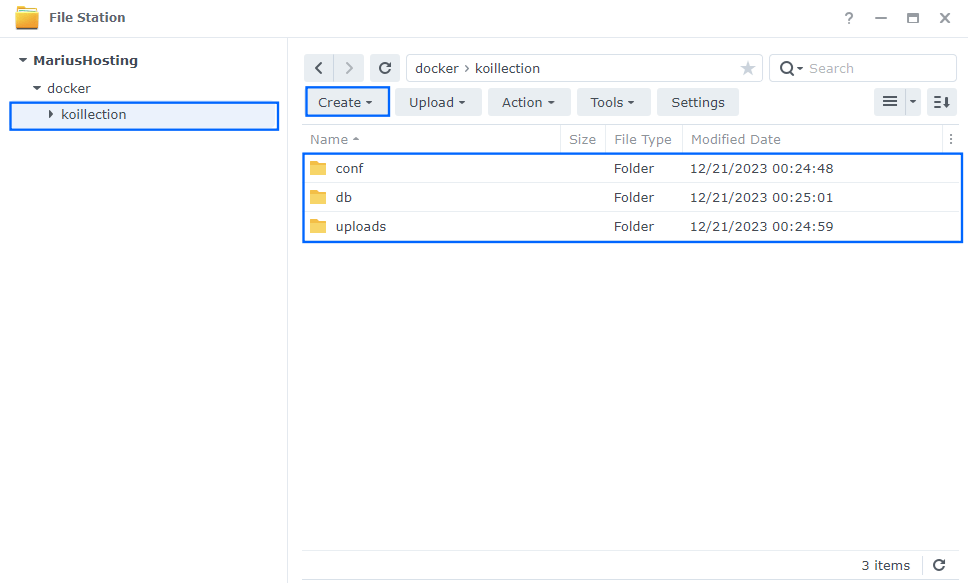
STEP 5
Log into Portainer using your username and password. On the left sidebar in Portainer, click on Home then Live connect. Follow the instructions in the image below.
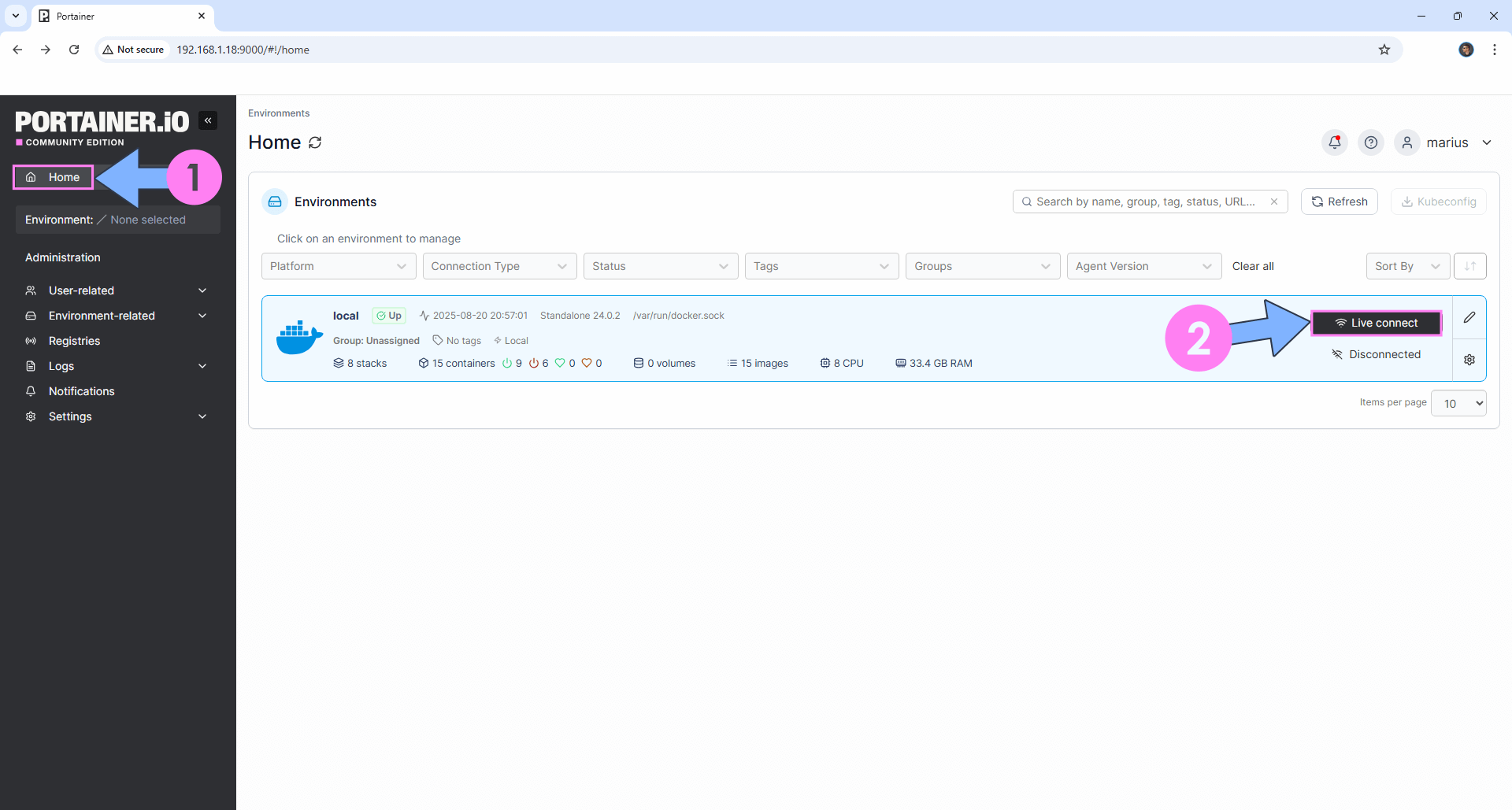
On the left sidebar in Portainer, click on Stacks then + Add stack. Follow the instructions in the image below.
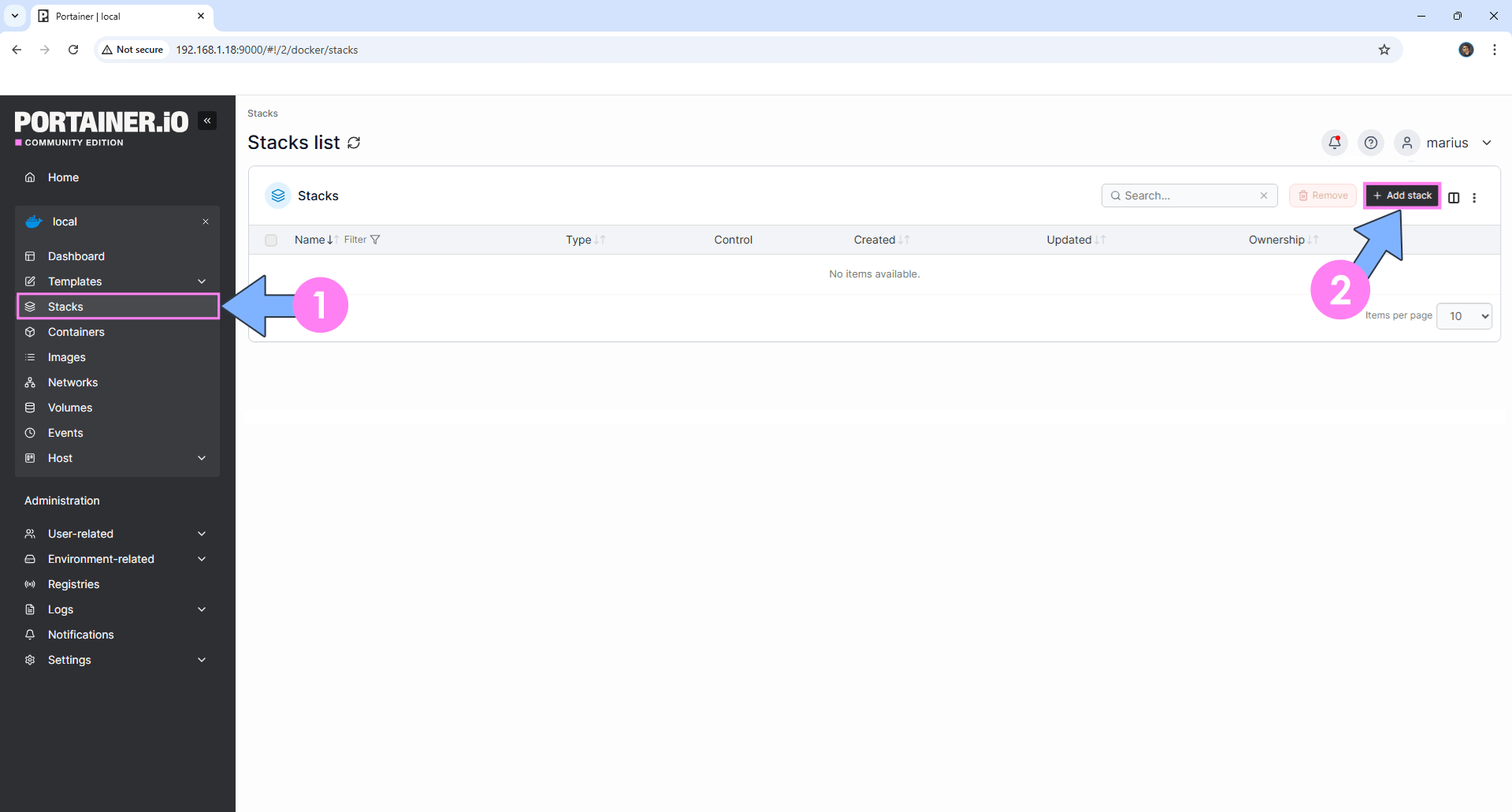
STEP 6
In the Name field type in koillection. Follow the instructions in the image below.
services:
koillection:
image: koillection/koillection
container_name: Koillection
environment:
DB_DRIVER: pdo_pgsql
DB_NAME: koillection
DB_HOST: db
DB_PORT: 5432
DB_USER: koillectionuser
DB_PASSWORD: koillectionpass
DB_VERSION: 17
PHP_TZ: Europe/Bucharest
HTTPS_ENABLED: 0
PUID: 1026
PGID: 100
ports:
- 4460:80
volumes:
- /volume1/docker/koillection/conf:/conf:rw
- /volume1/docker/koillection/uploads:/uploads:rw
depends_on:
- db
restart: on-failure:5
db:
image: postgres:17
container_name: Koillection-DB
security_opt:
- no-new-privileges:true
healthcheck:
test: ["CMD", "pg_isready", "-q", "-d", "koillection", "-U", "koillectionuser"]
timeout: 45s
interval: 10s
retries: 10
environment:
POSTGRES_DB: koillection
POSTGRES_USER: koillectionuser
POSTGRES_PASSWORD: koillectionpass
volumes:
- /volume1/docker/koillection/db:/var/lib/postgresql/data:rw
restart: on-failure:5
Note: Before you paste the code above in the Web editor area below, change the value for PHP_TZ. (Select your current Time Zone from this list.)
Note: Before you paste the code above in the Web editor area below, change the value numbers for PUID and PGID with your own values. (Follow my step by step guide on how to do this.)

STEP 7
Scroll down on the page until you see a button named Deploy the stack. Click on it. Follow the instructions in the image below. The installation process can take up to a few minutes. It will depend on your Internet speed connection.
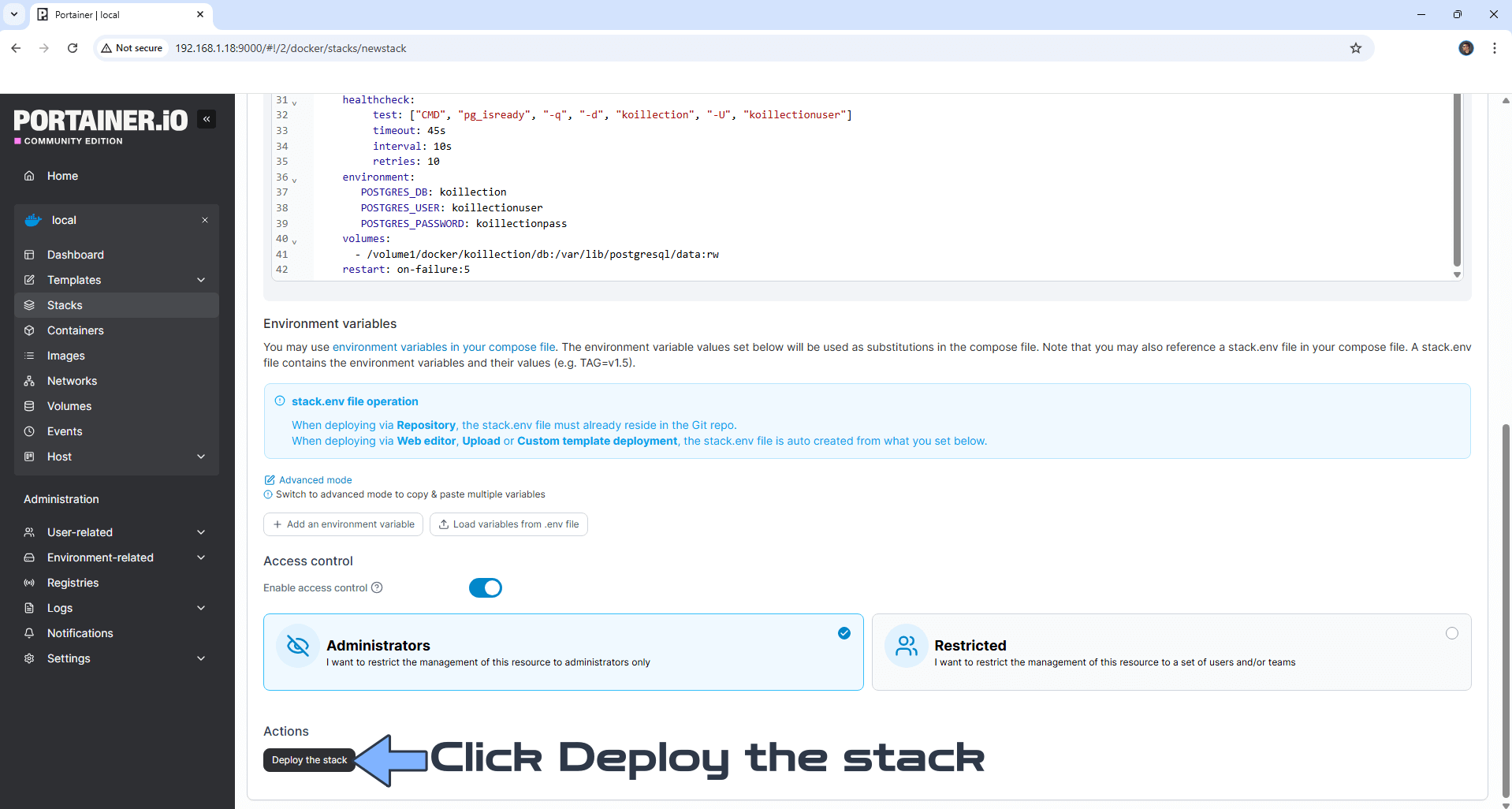
STEP 8
If everything goes right, you will see the following message at the top right of your screen: “Success Stack successfully deployed“.
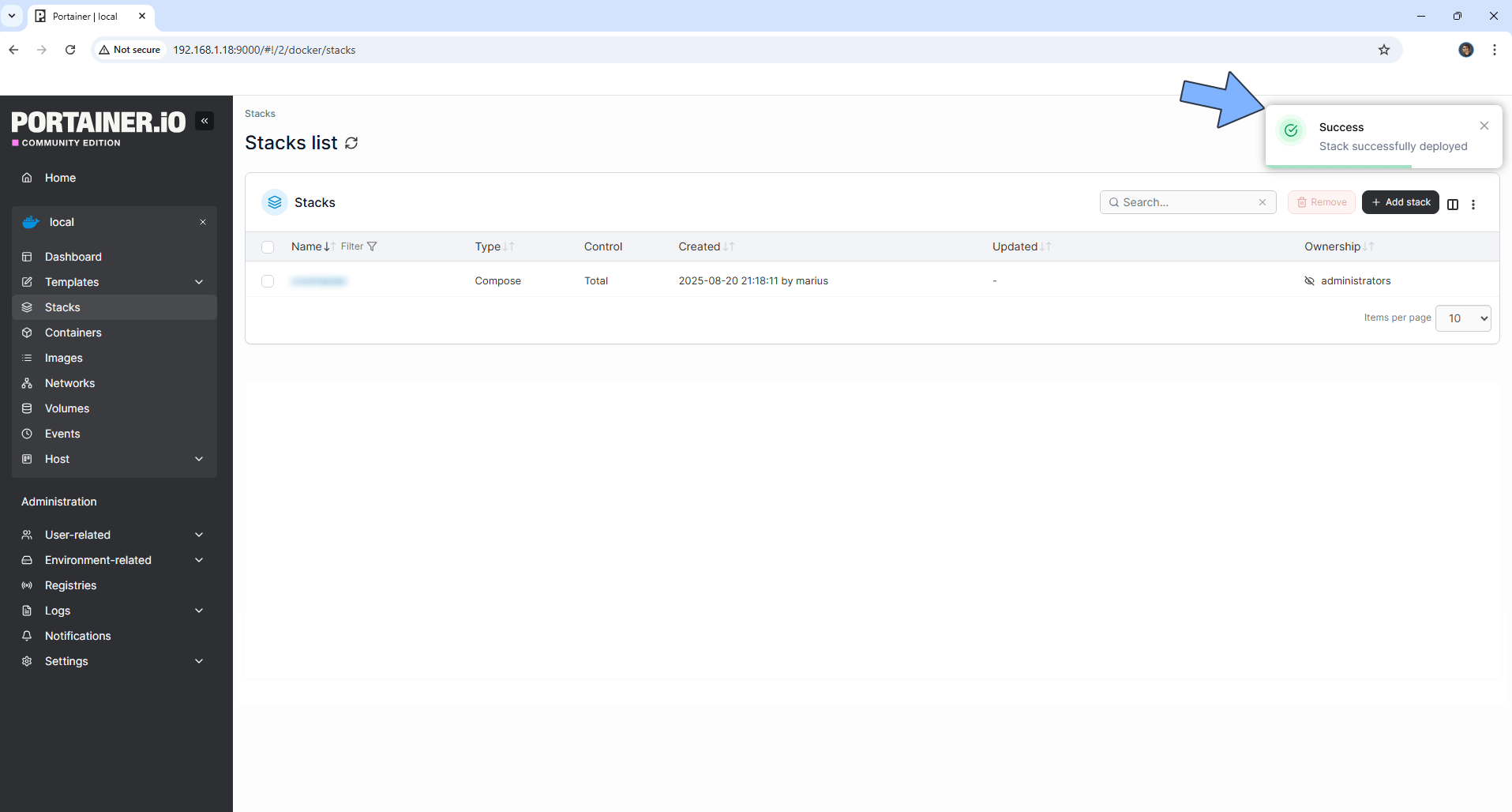
STEP 9
🟢Please Support My work by Making a Donation. Almost 99,9% of the people that install something using my guides forget to support my work, or just ignore STEP 1. I’ve been very honest about this aspect of my work since the beginning: I don’t run any ADS, I don’t require subscriptions, paid or otherwise, I don’t collect IPs, emails, and I don’t have any referral links from Amazon or other merchants. I also don’t have any POP-UPs or COOKIES. I have repeatedly been told over the years how much I have contributed to the community. It’s something I love doing and have been honest about my passion since the beginning. But I also Need The Community to Support me Back to be able to continue doing this work.
STEP 10
The installation process can take up to a few seconds/minutes. It will depend on your Internet speed connection. Now open your browser and type in http://Synology-ip-address:4460 If everything goes right you will see the installation page. Type in your own Username, Email, Password, Time zone, then select your favorite Date format. Click Submit. Follow the instructions in the image below.
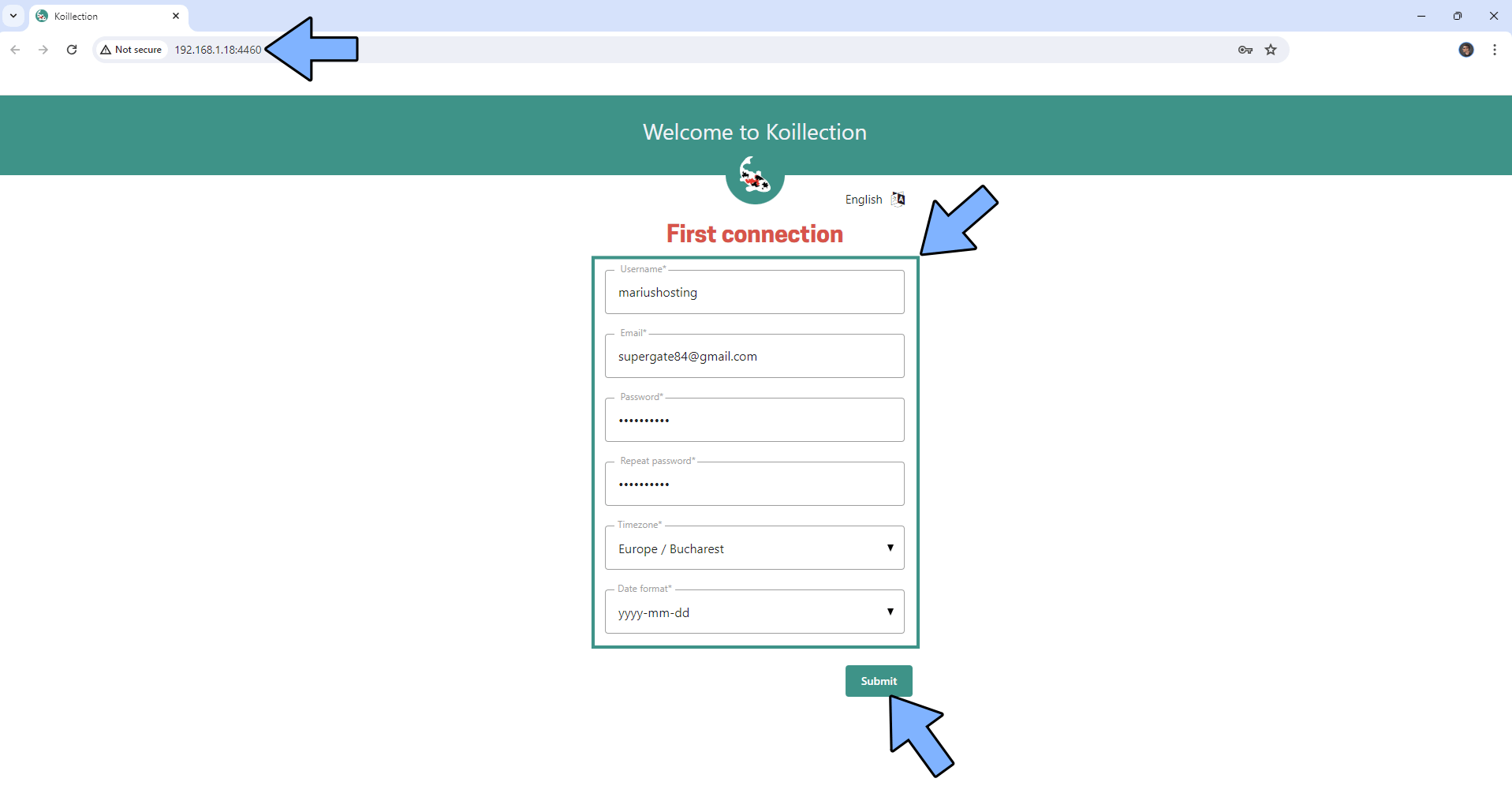
STEP 11
At the top right of the page click on your profile then Settings. Change the Theme to Dark then scroll down the page to save. Follow the instructions in the image below.
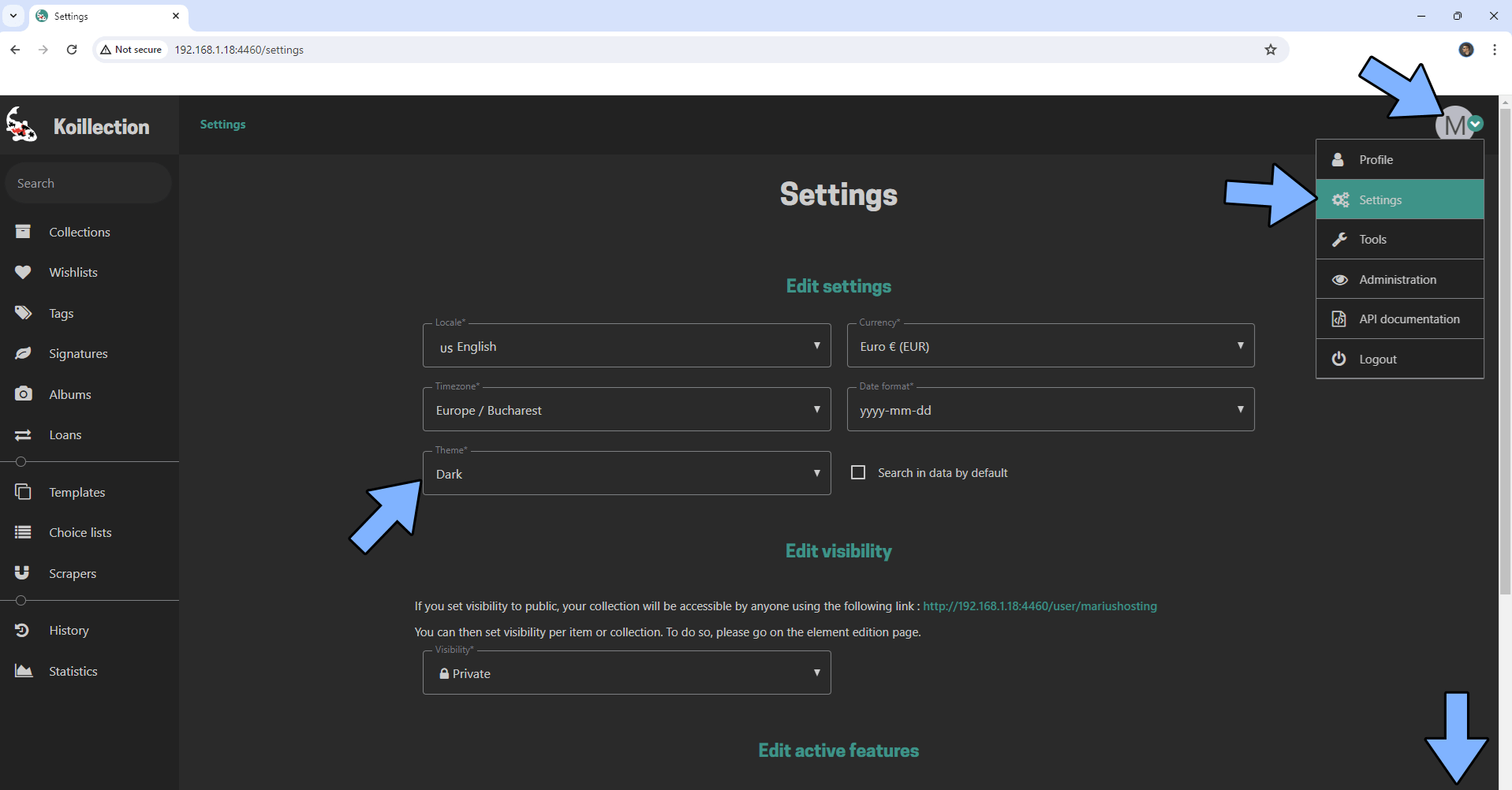
STEP 12
Your Koillection dashboard at a glance!
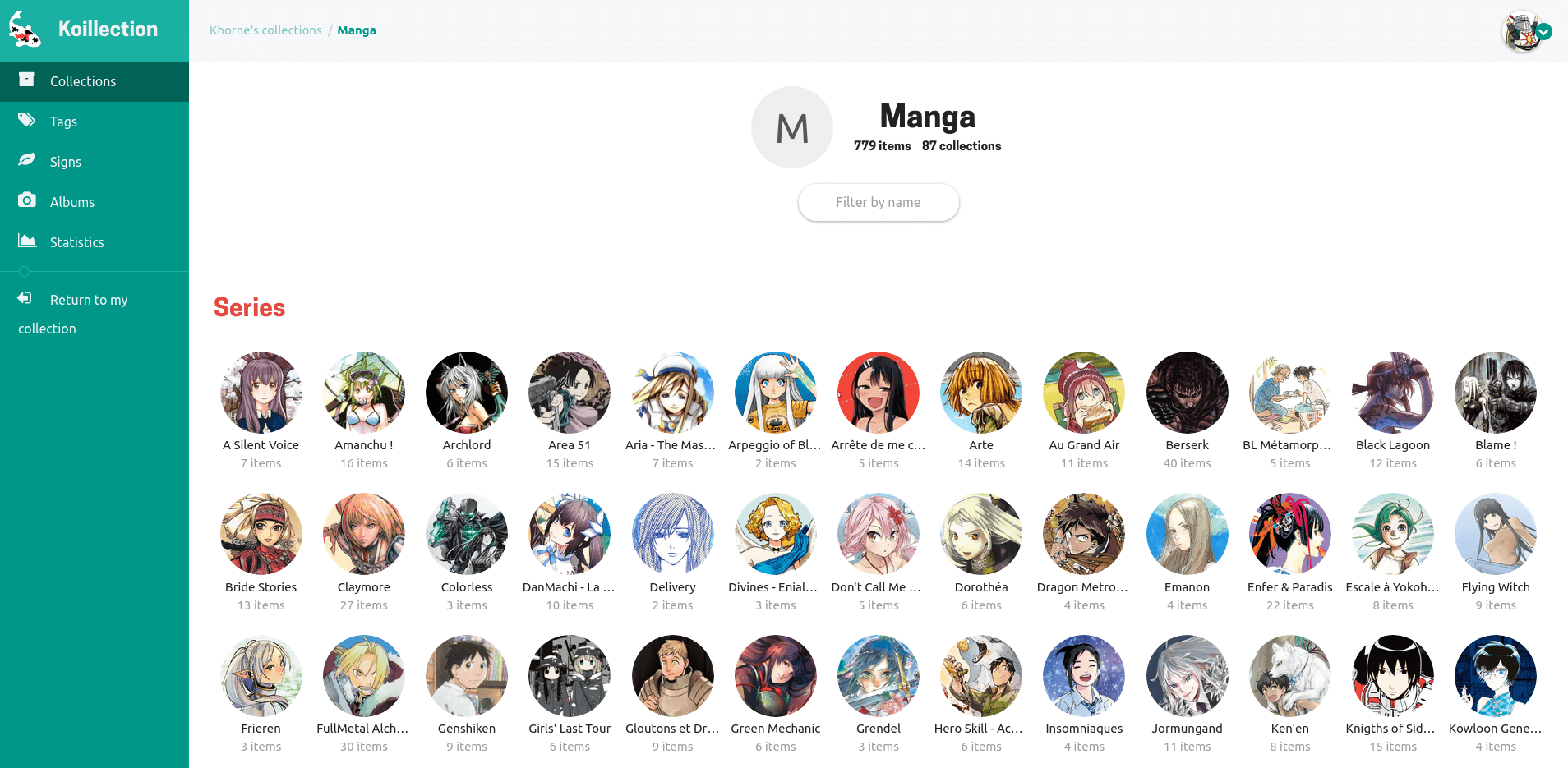
Enjoy Koillection!
If you encounter issues by using this container, make sure to check out the Common Docker issues article.
Note: If you want to run the Koillection container over HTTPS, check How to Run Docker Containers Over HTTPS. In order to make Koillection work via HTTPS, it’s mandatory to activate WebSocket.
Note: Can I run Docker on my Synology NAS? See the supported models.
Note: How to Back Up Docker Containers on your Synology NAS.
Note: Find out how to update the Koillection container with the latest image.
Note: How to Free Disk Space on Your NAS if You Run Docker.
Note: How to Schedule Start & Stop For Docker Containers.
Note: How to Activate Email Notifications.
Note: How to Add Access Control Profile on Your NAS.
Note: How to Change Docker Containers Restart Policy.
Note: How to Use Docker Containers With VPN.
Note: Convert Docker Run Into Docker Compose.
Note: How to Clean Docker.
Note: How to Clean Docker Automatically.
Note: Best Practices When Using Docker and DDNS.
Note: Some Docker Containers Need WebSocket.
Note: Find out the Best NAS Models For Docker.
Note: Activate Gmail SMTP For Docker Containers.
This post was updated on Tuesday / December 23rd, 2025 at 2:14 AM
